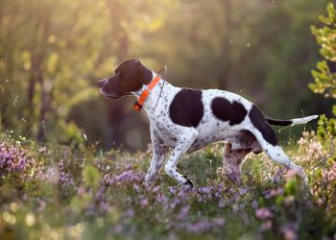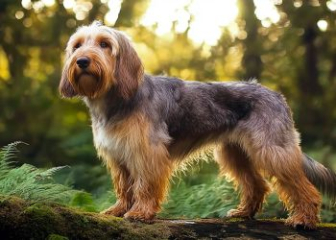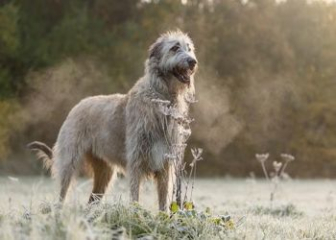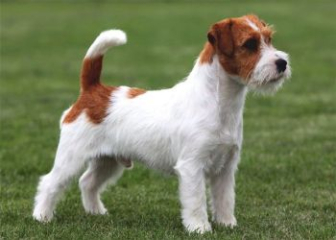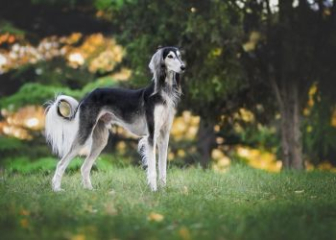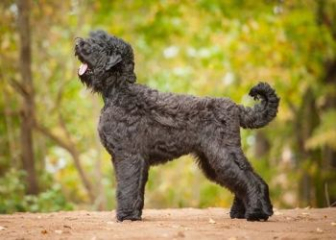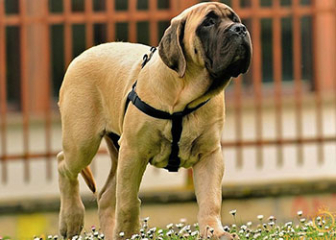Pekingese – The Royal Companion Dog from China
Blog | by
The Pekingese, also known as the "Fu Dog" or "Lion Dog," is an ancient toy breed from China. With a small body and a lifespan of 10–12 years, this dog has long been associated with royalty and spiritual symbolism.
The Pekingese was considered a sacred symbol of divinity and good fortune in ancient China. Weighing between 3–6 kg, these dogs are intelligent but can be stubborn and even aggressive, requiring firm training.
To learn more about this fascinating Dog breed, keep reading our in-depth article below!
Where Did the Pekingese Originate?
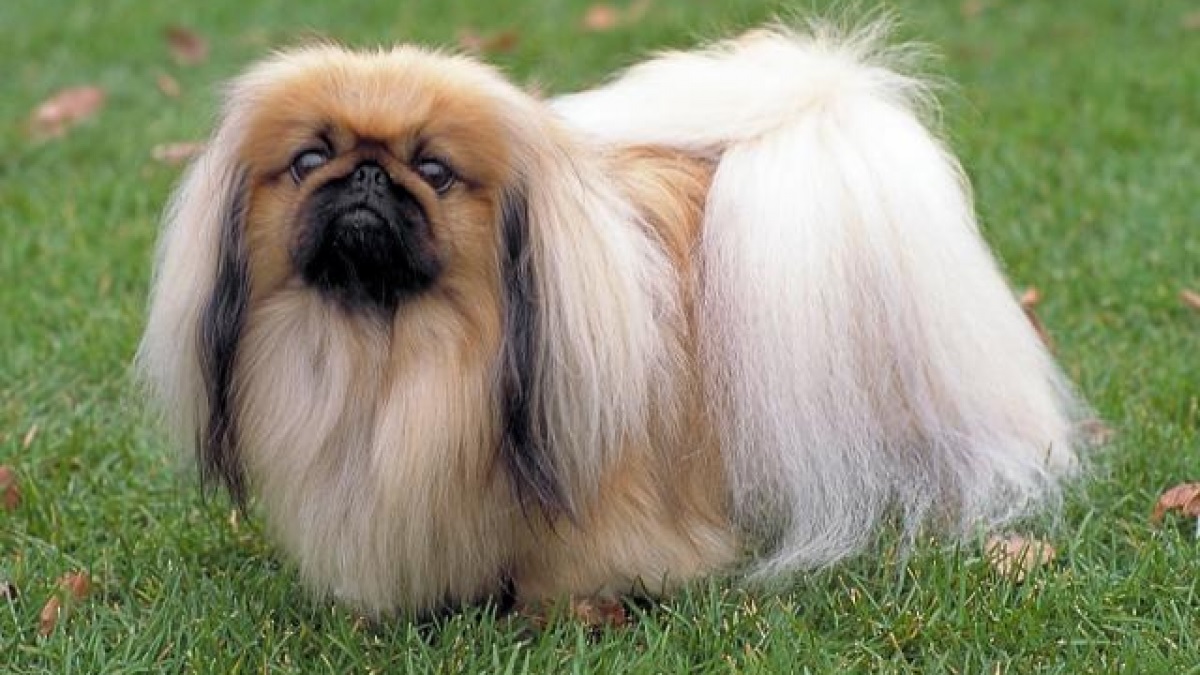
Pekingese – Also Known as Fu Dog or Lion Dog
The Pekingese has a history dating back over 2,000 years and was originally bred as a royal companion in the palaces of ancient Chinese emperors.
Many theories suggest that the Pekingese was considered a sacred dog, believed to have the power to ward off evil spirits. It was regarded as the "Messenger of Buddha" and was exclusively owned by the noble royal class.
In 1860, after the Qing Dynasty was defeated by British and French forces, five Pekingese dogs were taken to the West and bred extensively.
By the late 19th century, the Pekingese made its way to dog exhibitions in the UK, and in 1909, the breed was officially recognized by the American Kennel Club (AKC) Toy Group. Since then, the breed has been widely bred worldwide, becoming one of the most beloved toy dog breeds.
How Many Types of Pekingese Are There?
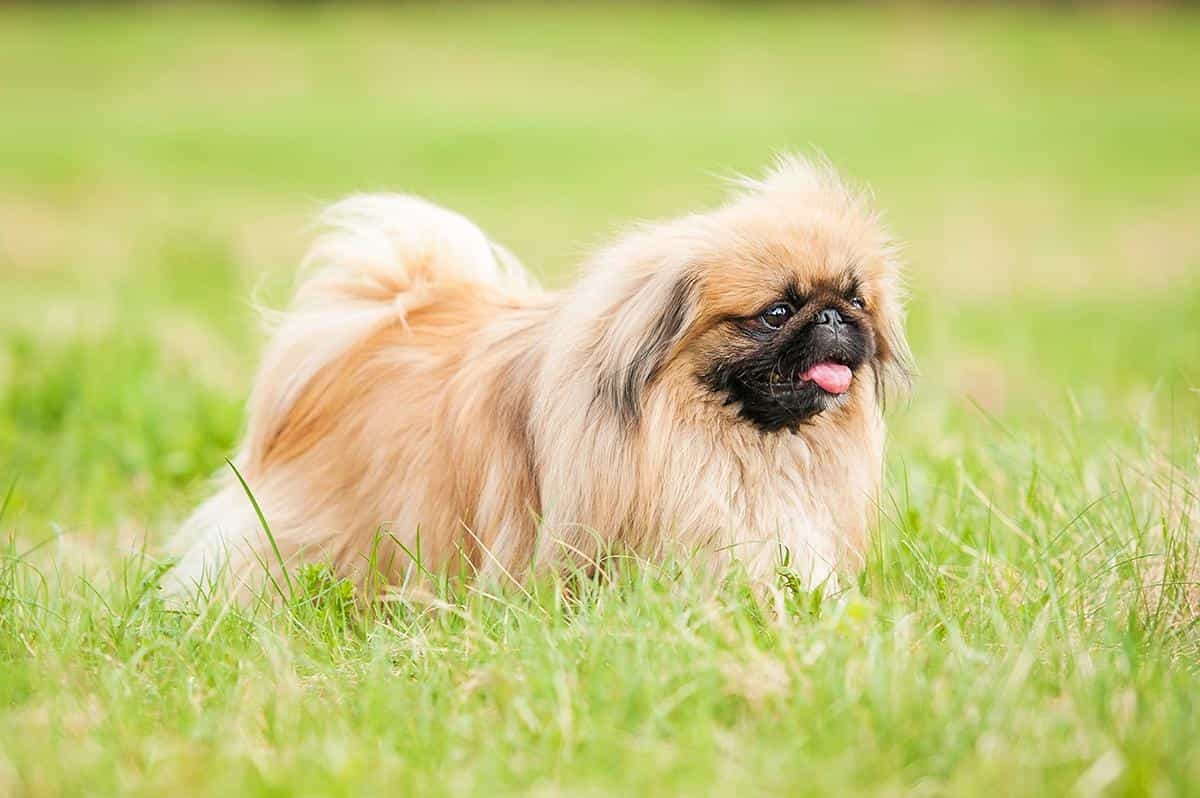
Purebred Pekingese
Currently, the Pekingese breed is divided into two main types: purebred Pekingese and mixed Pekingese. Below are some of the most common types of Pekingese.
Purebred Pekingese
The purebred Pekingese originates from China and retains all the distinctive features of this ancient breed, including:
- Height: 15 - 25 cm
- Weight: 3 - 6 kg
- Head: Large head, short upturned snout, round eyes
- Coat: Long and dense, commonly found in colors like white, red-brown, black, and cream
- Tail: Curved with thick fur
Japanese Chin Mix (Pekingese-Japanese Chin Hybrid)
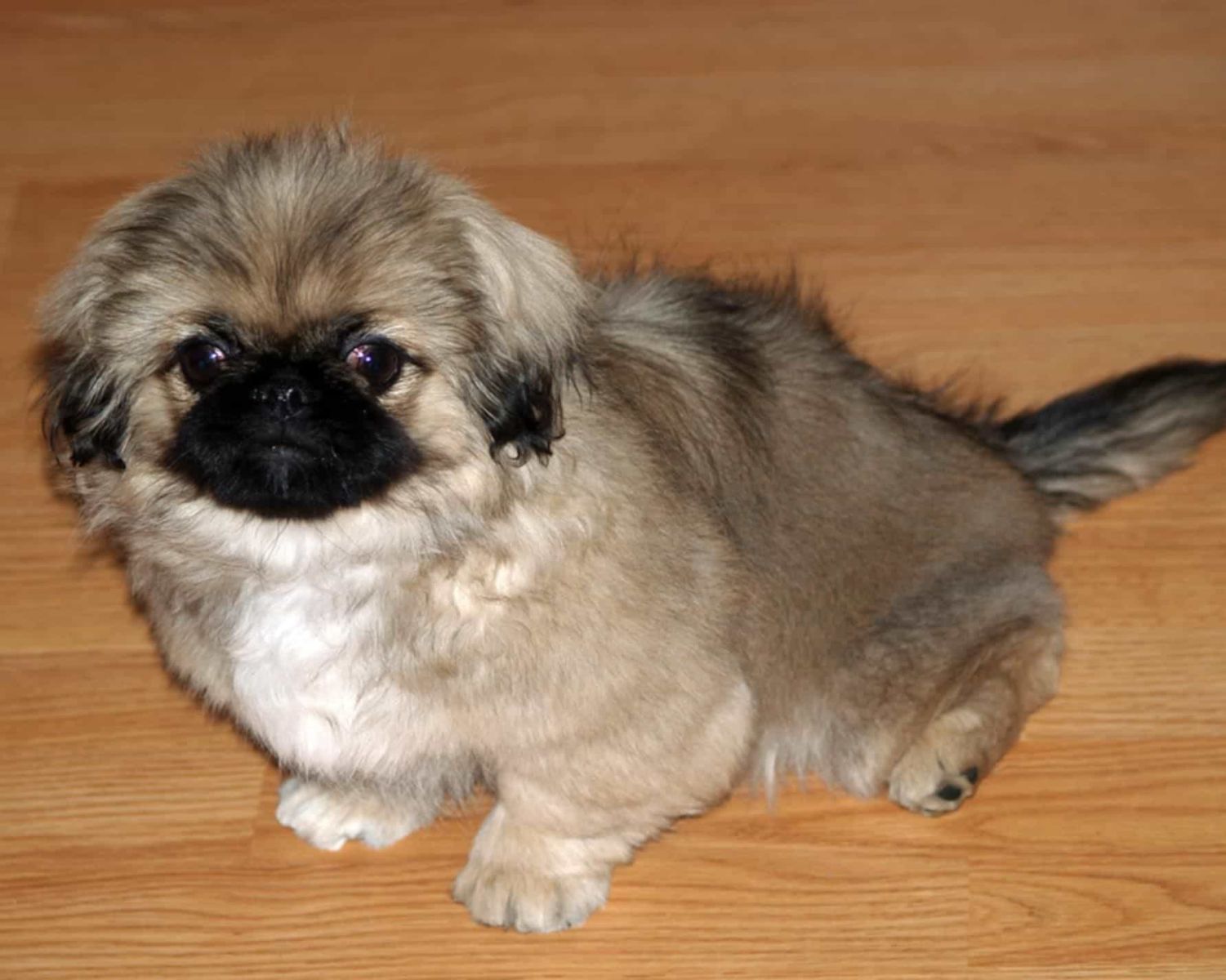
Image of a Pekingese-Japanese Chin Mix
The Pekingese-Japanese Chin mix is a crossbreed between a purebred Pekingese and a Japanese Chin. These dogs inherit a blend of features from both parent breeds, including:
- Size: Smaller than a purebred Pekingese
- Coat: Longer, softer, and silkier
- Face: Retains the distinct look of a Pekingese but with a slightly longer snout
- Temperament: Gentler and more obedient than a purebred Pekingese
Pekingese-Poodle Mix
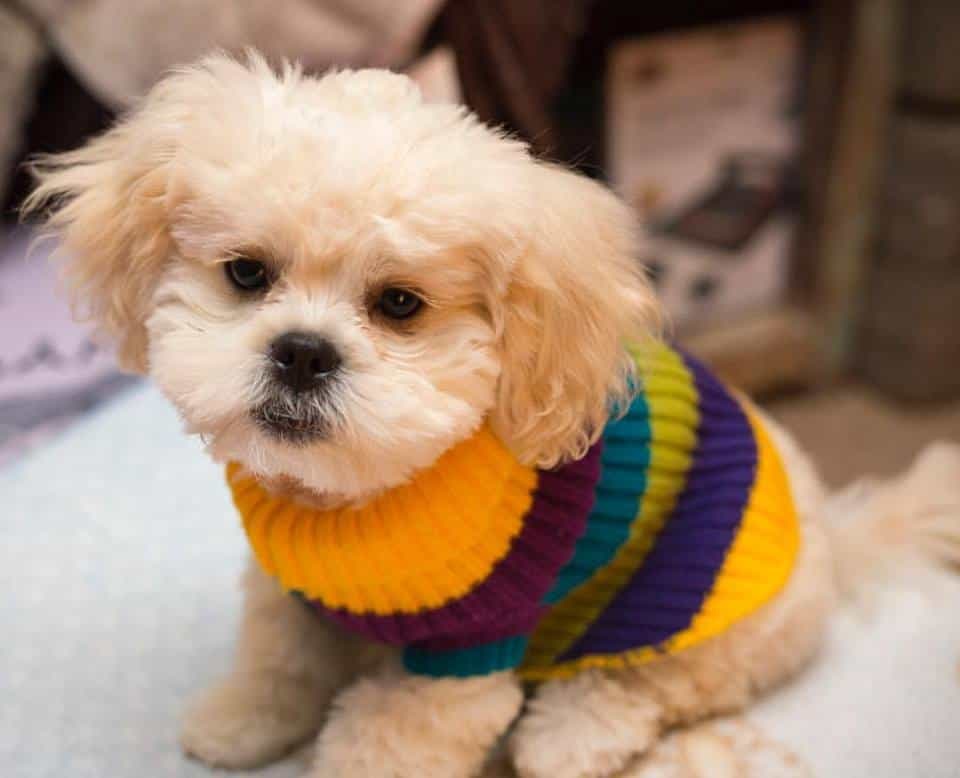
Image of a Pekingese-Poodle Mix
The Pekingese-Poodle mix is a crossbreed between a Pekingese and a Toy Poodle, inheriting unique traits from both parent breeds:
- Size: Compact and small
- Muzzle: Longer than a purebred Pekingese
- Coat: Slightly curly or long, with minimal shedding like a Poodle
- Temperament: Intelligent, energetic, and obedient
Pekingese-Chihuahua Mix
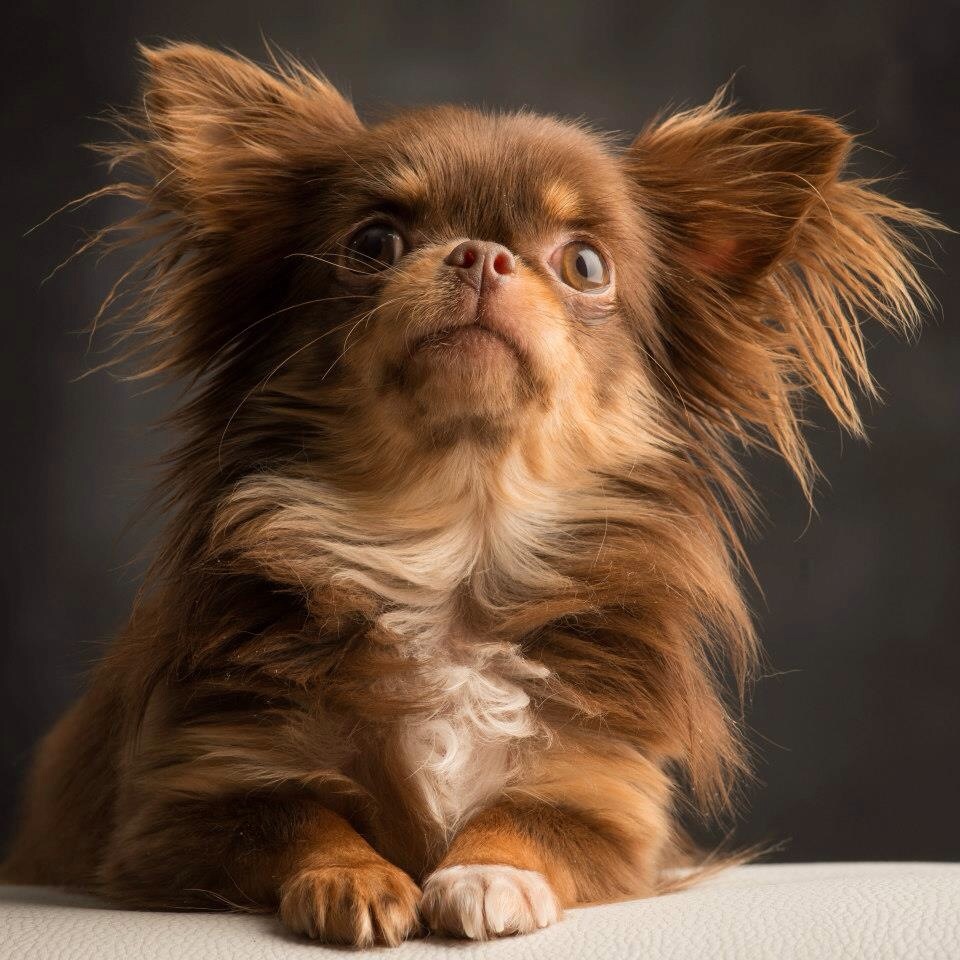
Pekingese-Chihuahua Mix
The Pekingese-Chihuahua mix is a hybrid breed resulting from crossing a Pekingese with a Chihuahua, featuring the following characteristics:
- Size: Smaller and more compact than a purebred Pekingese
- Muzzle: Pointed like a Chihuahua
- Coat: Can be either long or short, depending on the genetic ratio
- Temperament: Energetic, playful, and slightly "sassy"
Pekingese-Pomeranian Mix
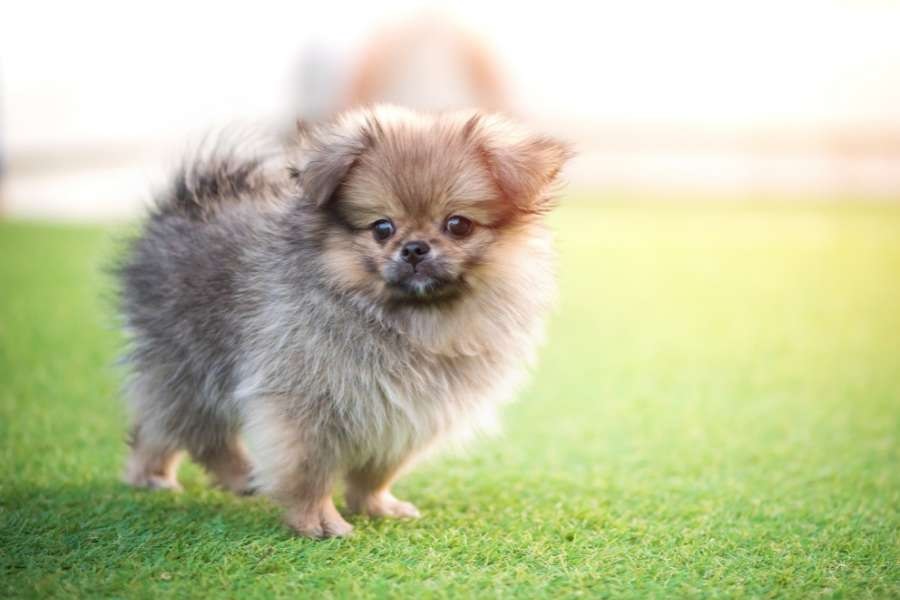
Pekingese-Pomeranian Mix
The Pekingese-Pomeranian mix is a hybrid breed created by crossing a Pekingese with a Pomeranian, featuring the following characteristics:
- Size: Small and compact
- Coat: Fluffy and thick
- Eyes: Large and round
- Muzzle: Pointed, with erect ears
- Temperament: Energetic, affectionate, and loyal to its owner
Personality of the Pekingese (Pekingese Temperament)
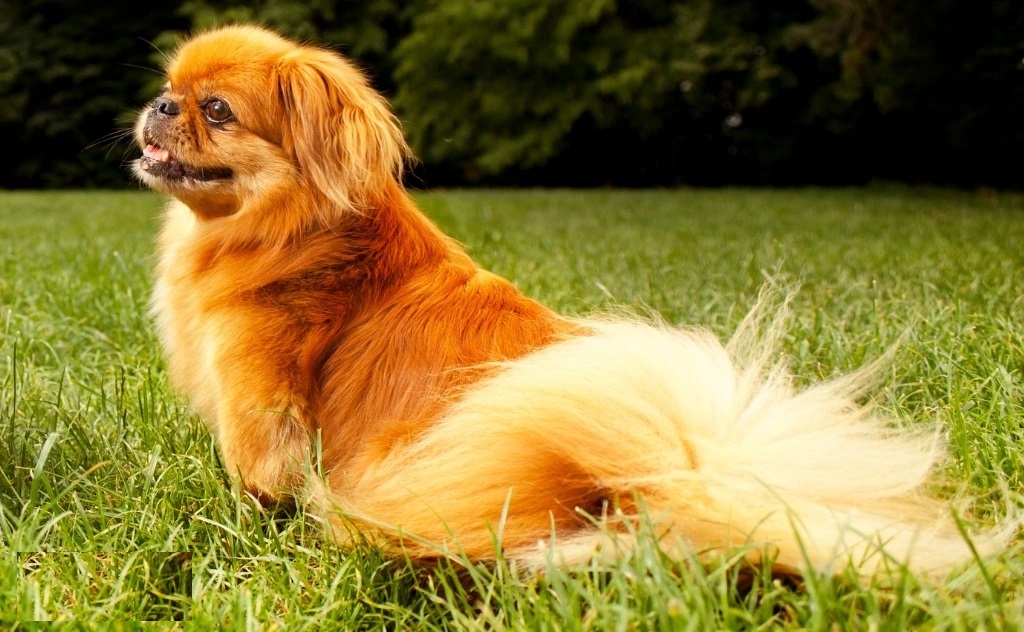
The Pekingese is a breed known for its adorable appearance and strong, independent personality.
Let's explore its temperament in more detail.
Brave and Highly Alert
Despite its small size, the Pekingese is fearless and courageous. These dogs have a high level of alertness and will bark loudly when strangers approach their owner or if they hear unusual sounds.
Independent but Stubborn
Pekingese dogs can be stubborn and headstrong if not trained from a young age. They prefer to do things their own way and often resist commands. Therefore, consistent and firm training is necessary to ensure obedience.
Intelligent but Proud
This breed is highly intelligent and learns quickly, but they can also be quite aloof and haughty. If overly pampered, they may develop a demanding and spoiled attitude.
Territorial and Aggressive
Pekingese dogs have a strong sense of territoriality, making them wary of other pets. If you have other animals at home, gradual socialization is necessary to prevent conflicts.
Lazy and Dislikes Exercise
Unlike many other dog breeds, the Pekingese is not very active and prefers to lounge around rather than run and play. To prevent obesity and laziness, a suitable exercise routine is essential.
How to Take Care of a Pekingese
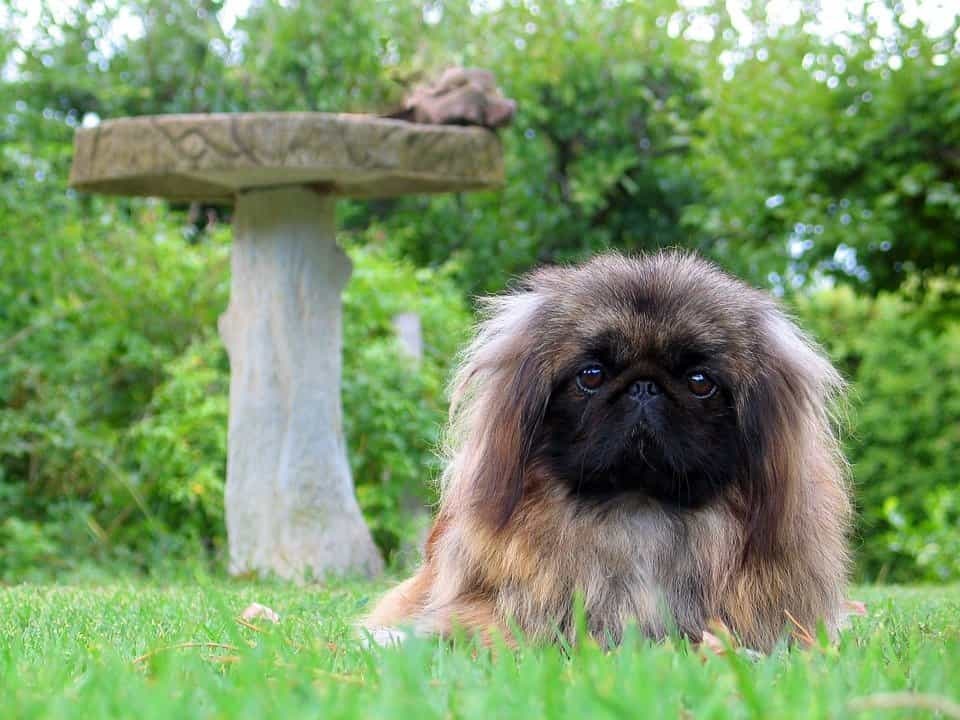
The Adorable Appearance of the Pekingese
As a royal breed, the Pekingese tends to be quite picky about everything, from diet and hygiene to grooming and exercise. Below is a detailed guide on how to properly care for your Pekingese to keep them healthy and active.
Proper Nutrition for Pekingese
Here are some recommended nutritious foods and an appropriate feeding schedule for Pekingese dogs.
Best Foods for Pekingese
- Protein & Meat Sources: Chicken, beef, pork, salmon, etc.
- Vitamins & Minerals: Chicken liver, pork heart, eggs, etc.
- Fiber: Carrots, pumpkin, green vegetables, broccoli, etc.
- High-quality dry dog food: Nutrient-rich kibble.
Foods to Avoid
- Hard, sharp bones.
- Salty, spicy, or oily foods.
- Fried or greasy foods.
- Chocolate, onions, garlic.
Feeding Schedule Based on Age
| Age | Meals per Day | Suitable Food |
|---|---|---|
| 2 - 3 months | 4 - 5 meals | Soft porridge, mashed meat, finely chopped vegetables. |
| 3 - 6 months | 3 - 4 meals | Gradually introduce solid foods, soft kibble, cooked vegetables. |
| Over 6 months | 2 meals | Normal solid food, more diverse diet. |
Proper Grooming & Hygiene
Pekingese dogs have long, thick fur, so proper grooming is essential to keep their coat smooth and healthy.
✅ Grooming Routine:
- Bathe 1-2 times per week using dog shampoo.
- Dry their coat completely after bathing.
- Brush daily to remove loose fur and prevent tangles.
- Trim their coat every 2-3 months.
- Clean their eyes regularly with a soft, damp cloth.
- Check and clean their ears to prevent infections.
- Brush their teeth 2-3 times a week to avoid dental issues.
Exercise & Training
Pekingese dogs are lazy by nature and prefer lounging rather than playing. A proper exercise routine is needed to keep them fit.
Pekingese dogs are lazy by nature and prefer lounging rather than playing. A proper exercise routine is needed to keep them fit.
Vaccination and Regular Health Check-ups
To keep your Pekingese dog healthy, you should follow vaccination schedules and regular health check-ups as advised by a veterinarian.
Basic vaccination schedule for Pekingese dogs:
-
5-in-1 vaccine: From 6 to 8 weeks old.
-
7-in-1 vaccine: From 10 to 12 weeks old.
-
Rabies vaccine: After 16 weeks old.
Common Diseases in Pekingese Dogs
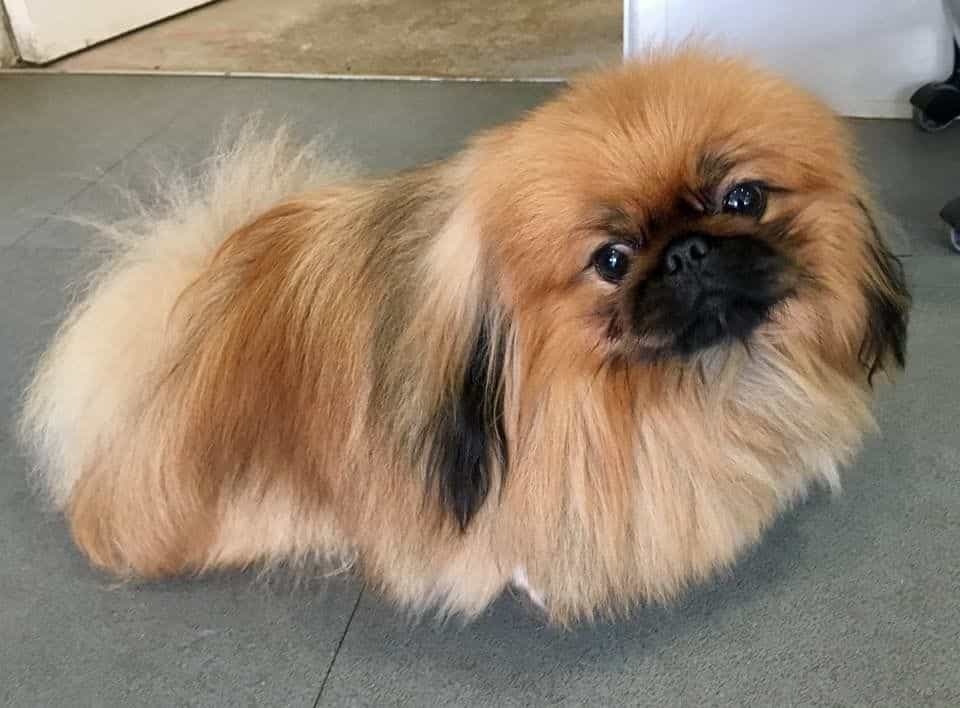
The Pekingese dog with its thick, long coat.
The Pekingese is a small dog breed with a short nose and long, thick fur, making it more susceptible to respiratory, skin, and digestive issues compared to other breeds. Let’s take a closer look at some common health problems in Pekingese dogs and how to prevent and treat them effectively.
Respiratory Issues
Pekingese dogs are prone to respiratory conditions such as breathing difficulties and pneumonia due to their short noses.
-
Causes: Short nasal structure, weather conditions, environmental factors, bacteria.
-
Symptoms: Difficulty breathing, wheezing, frequent sneezing, runny nose.
-
Prevention: Keep them warm in cold weather, avoid excessive activity in hot conditions, and seek veterinary attention immediately if symptoms become severe.
Obesity
Pekingese dogs tend to be inactive and enjoy lying around, making them prone to obesity.
-
Causes: High intake of carbohydrates and fatty foods, lack of exercise, increased risk with age.
-
Symptoms: Enlarged belly, sluggish movement, difficulty in physical activities.
-
Prevention: Maintain a balanced diet, encourage regular exercise, limit snacks and unhealthy treats.
Skin Infections
Due to their long and thick fur, Pekingese dogs are susceptible to skin conditions such as mange, fungal infections, and allergies if not properly groomed.
-
Causes: Dirty or damp fur, fleas, ticks, fungal parasites, food or chemical allergies.
-
Symptoms: Itching, frequent scratching, excessive shedding, red or irritated skin.
-
Prevention: Regular bathing and grooming, keeping their bedding clean, and maintaining a hygienic living environment.
Eye Problems
The long fur of Pekingese dogs can irritate their eyes, making them prone to eye infections such as conjunctivitis and excessive tearing.
-
Causes: Hair irritating the eyes, dust, dirt, bacterial infections.
-
Symptoms: Excessive tearing, redness, swelling, frequent squinting.
-
Prevention: Clean their eyes daily, trim the fur around their eyes, and use vet-recommended eye drops when necessary.
Price List and Important Notes When Buying a Pekingese
Below is the price list and essential tips for purchasing a Pekingese. If you're considering owning one of these adorable dogs, check out the details below!
How Much Does a Pekingese Cost?
The price of a Pekingese dog depends on factors such as its origin, purity, appearance, and coat color. Take a look at the price list below for reference.
| Origin | Price (Estimated) |
| Purebred Pekingese | 3 - 5 million VND |
| Pekingese mixed with Japanese Chin | 1 - 2 million VND |
| Pekingese mixed with other breeds | 500K - 1 million VND |
Important Notes When Buying a Pekingese
Before purchasing a Pekingese, keep the following points in mind:
-
Determine Your Purpose: If you’re looking for a pet companion rather than a purebred show dog, you can opt for a mixed Pekingese breed to save costs.
-
Check the Origin & Documents: Verify the dog's paperwork, including proof of origin and vaccination records, to ensure everything is complete.
-
Examine Appearance: Conduct a basic health check—observe if the fur is smooth, if the dog is active, and if it looks healthy overall.
Collection of Beautiful Pekingese Dog Images
If you love Pekingese dogs and want to admire or collect their cutest images, scroll down to see the beautiful pictures we have gathered for you!
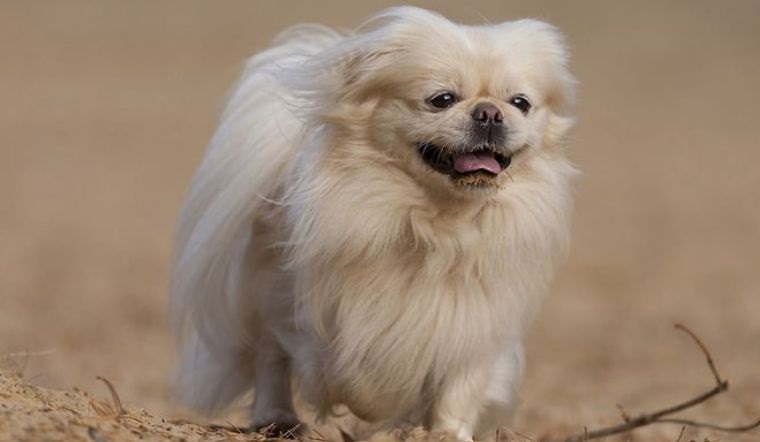
White Pekingese Mixed with Japanese Chin
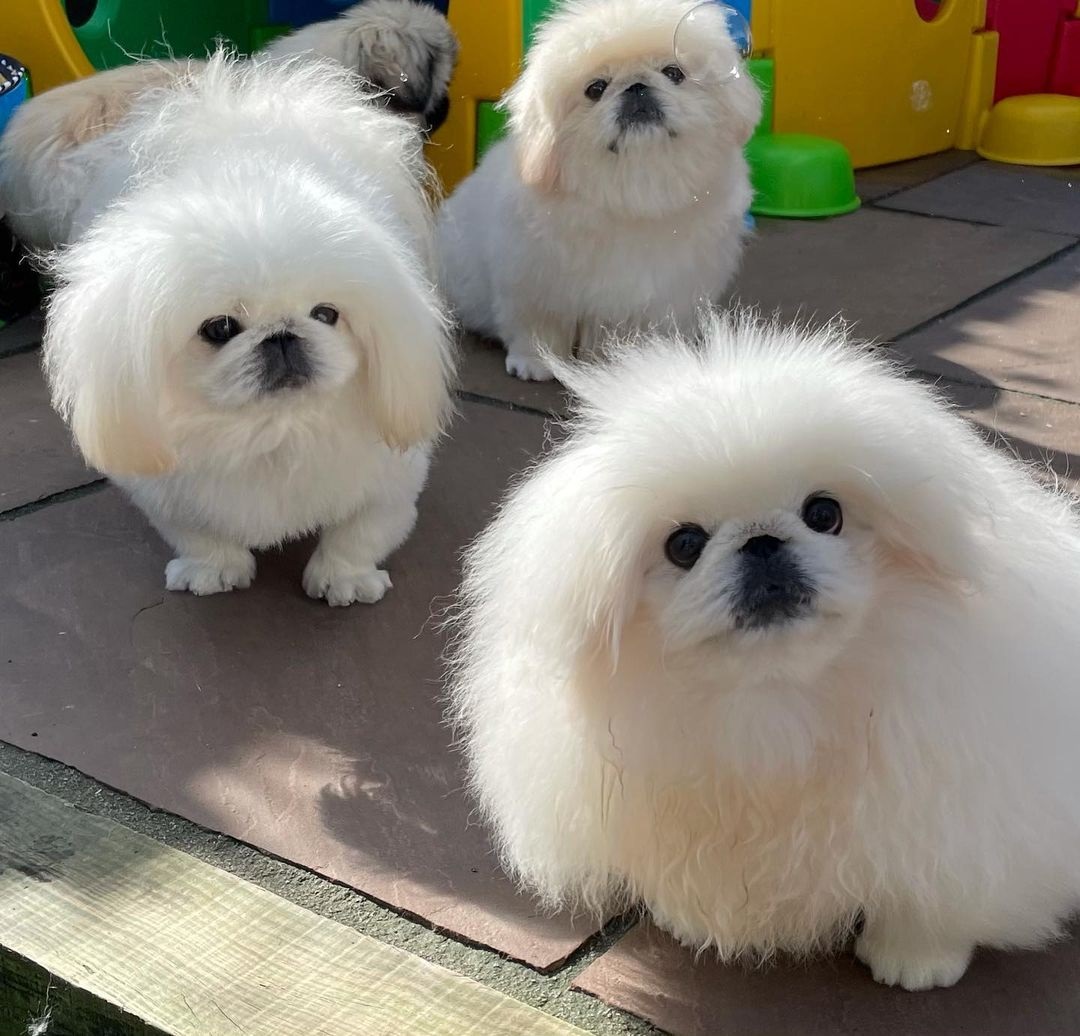
Images of Pekingese Puppies with Fluffy, Pure White Fur
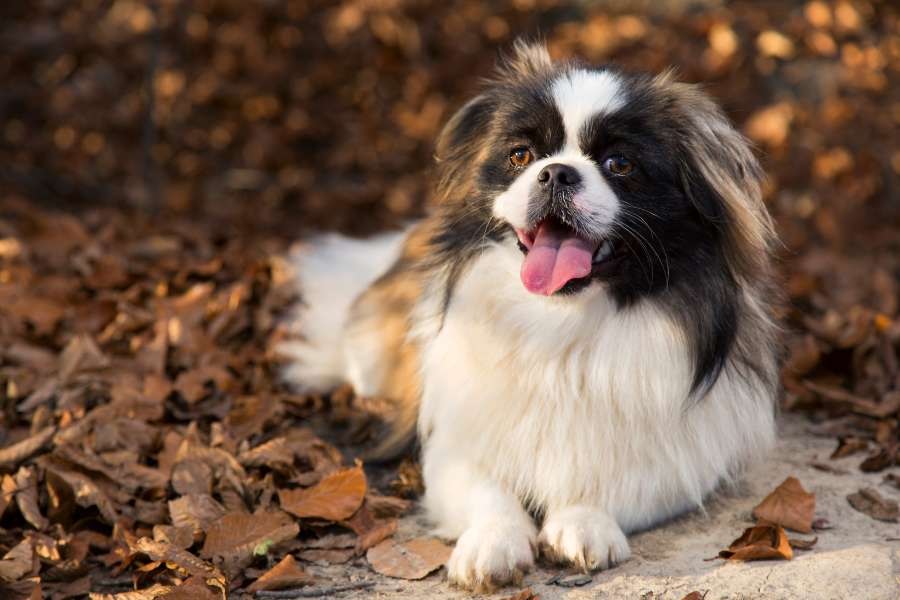
Images of Adult Pekingese Mixed with Japanese Chin
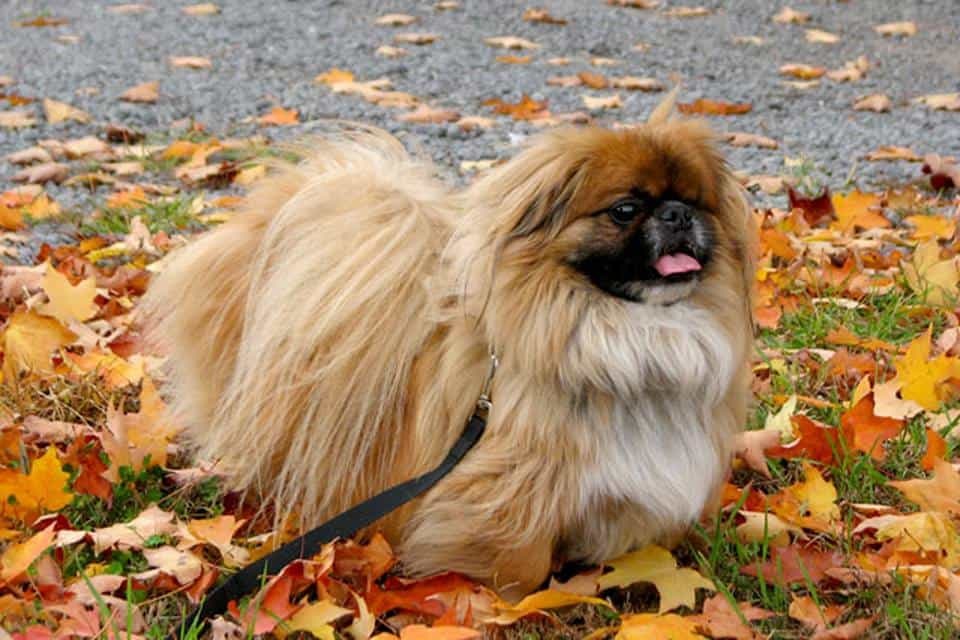
Images of Adult Purebred Pekingese Dogs
Above are the most detailed insights about Pekingese dogs that dogbreed.wiki has compiled just for you. We hope that after reading this article, you have gained a better understanding of this adorable breed and feel more confident in taking care of one.
See you in future articles in our Blog section, where we share more useful information and explore other fascinating dog breeds!

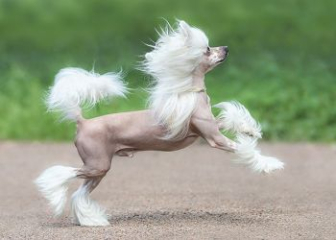
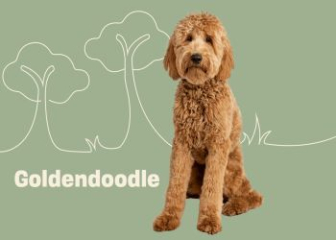
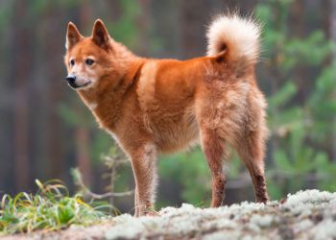

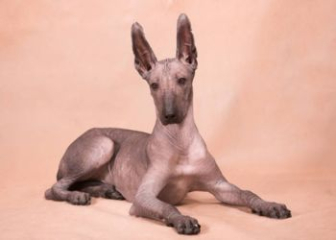
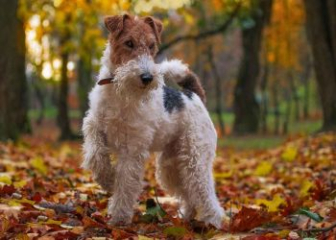


_350x250.jpg)

